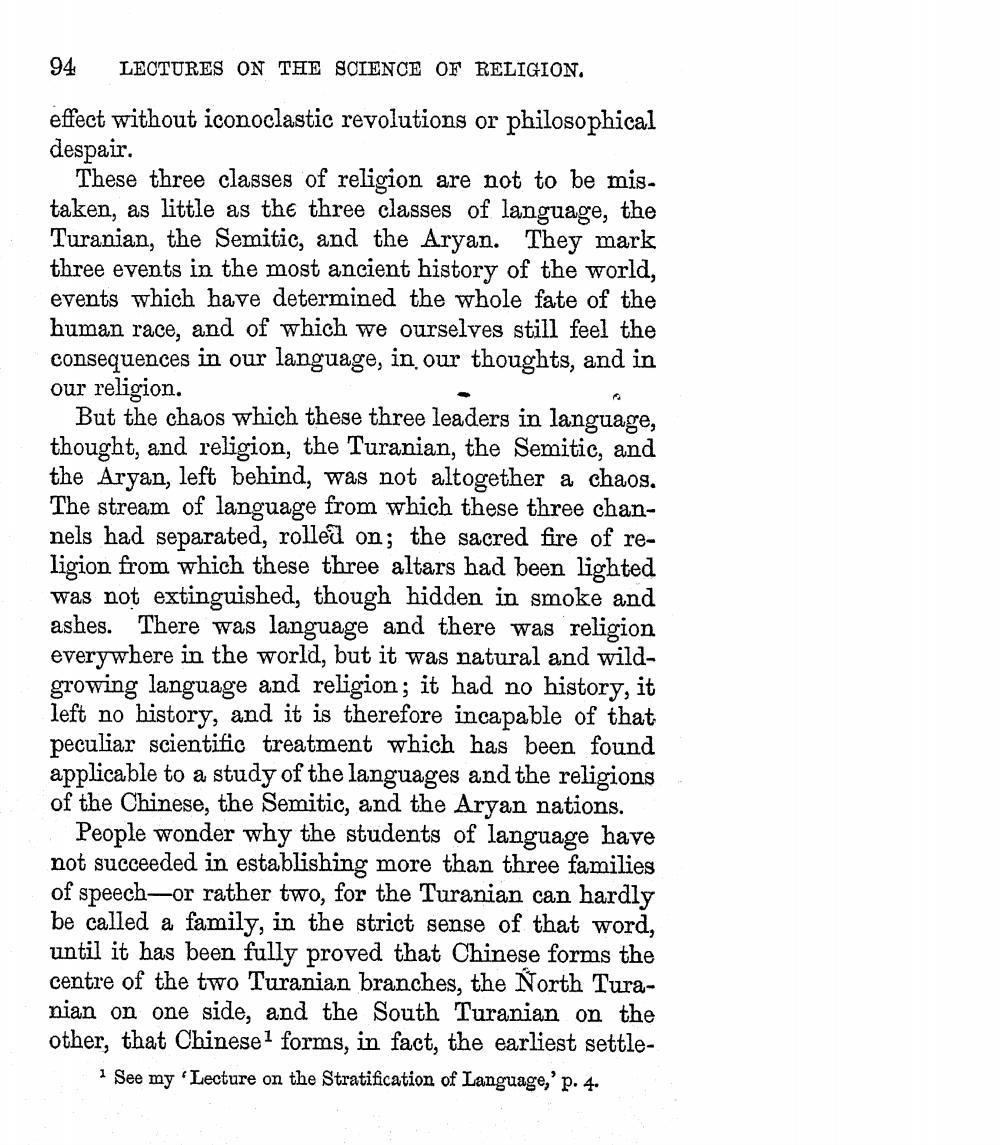________________
94 LECTURES ON THE SCIENCE OF RELIGION. effect without iconoclastic revolutions or philosophical despair.
These three classes of religion are not to be mistaken, as little as the three classes of language, the Turanian, the Semitic, and the Aryan. They mark three events in the most ancient history of the world, events which have determined the whole fate of the human race, and of which we ourselves still feel the consequences in our language, in our thoughts, and in our religion.
But the chaos which these three leaders in language, thought, and religion, the Turanian, the Semitic, and the Aryan, left behind, was not altogether a chaos. The stream of language from which these three channels had separated, rolled on; the sacred fire of religion from which these three altars had been lighted was not extinguished, though hidden in smoke and ashes. There was language and there was religion everywhere in the world, but it was natural and wildgrowing language and religion; it had no history, it left no history, and it is therefore incapable of that peculiar scientific treatment which has been found applicable to a study of the languages and the religions of the Chinese, the Semitic, and the Aryan nations.
People wonder why the students of language have not succeeded in establishing more than three families of speech-or rather two, for the Turanian can hardly be called a family, in the strict sense of that word, until it has been fully proved that Chinese forms the centre of the two Turanian branches, the North Turanian on one side, and the South Turanian on the other, that Chinese forms, in fact, the earliest settle
1 See my 'Lecture on the Stratification of Language,' p. 4.




